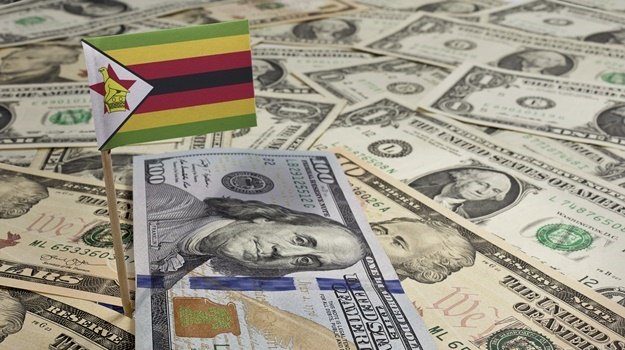Mastering the art of financial finesse
Introduction
In today’s intensely competitive and fluctuating market conditions, strategic financial planning using a well-prepared budget is not merely advantageous — it is crucial for both survival and growth.
As diligent business professionals, we must harness the power of budgets as strategic instruments. A budget acts as an exercise in financial finesse, providing a financial roadmap that steers businesses forward with clarity and proactive strategy.
In this article, we will investigate the essence of a budget, underscore its significance, examine its key elements and describe the typical process involved in designing a comprehensive budget that ensures a company’s financial well-being and supports informed strategic decisions.
Why does a budget matters?
A budget is a detailed financial plan that outlines expected revenues and expenditures over a specific period, usually annually.
It serves several critical roles: as a roadmap for business operations, a benchmark for performance measurement and a tactical planner for future financial decisions.
A budget aligns organisational efforts with long-term strategic objectives, facilitating a coordinated push towards collective goals.
By predicting both incomes and expenses, a budget helps businesses allocate resources, manage cash flows, plan for investments and mitigate risks associated with unforeseen financial downturns.
It serves multiple functions— starting from forecasting and performance measurement to resource allocation and financial management. By integrating budgeting into strategic management, businesses can harness several key benefits:
Enhanced financial awareness: Budgets make financial knowledge accessible and understandable, providing all departments with a clear view of their financial targets and constraints. This awareness is critical in helping teams make decisions that align with company-wide financial health and goals.
Proactive resource management: With a well-planned budget, businesses can allocate resources where they are most needed to maximise efficiency and return on investment. This resource allocation is strategic to ensure growth in critical areas while sustaining overall operational health.
Improved risk management: Budgets help businesses anticipate issues, identify where they are most vulnerable and plan accordingly. By understanding potential financial difficulties before they arise, companies can devise strategies to mitigate risks.
Data-driven decision making: A strategic budget is built upon both historical data and forward-looking forecasts, enabling businesses to make decisions based on evidence and projected metrics. This approach minimises guesswork and speculation, grounding business decisions in concrete data and analysis.
Goal-focused planning: Perhaps most importantly, budgets keep all levels of the organisation focused on strategic goals. They break down how each part of the organisation contributes to achieving these goals, making the criteria for success and progress clear to every team member
Key elements of a budget
A comprehensive budget contains a number of key elements, each contributing uniquely to the financial health and operational efficiency of a business:
Revenue estimates: This includes all potential income sources for the business, such as sales revenues, returns on investments and other income streams. Accuracy here is crucial, as overestimation can lead to spending excesses that could jeopardise financial stability.
Fixed costs: These are expenses that do not change with the level of goods or services produced by the business, such as rent, salaries and insurance. They are predictable, and hence, easier to plan for. Fixed costs are unavoidable costs.
They are there because we are in business. We need money to pay for space or to acquire land and build a plant or a shop .We need to pay salaries for people working in the shop.it does not matter that the owner is working.
Such cost must be fused in the budget. Costs like water, service charges, power and heating must be budgeted for and be absorbed into the cost of the goods and services that we are selling.
Variable costs: Unlike fixed costs, these expenses correlate directly with the business’s production output. They include costs like raw materials, manufacturing expenses and sales commissions, salaries. Some cost are both fixed and variable. They are semi variable such as salesman‘s commission.
One-time expenses: These are not regular expenses but occasionally occur, such as purchasing new technology, renovations or unexpected repairs.
Profit projections: After accounting for all forms of incomes and expenditures, what remains is projected profit, a critical indicator of the business’s financial health.
Cash flow forecast: It is essential to incorporate a projection of cash flow to ensure the business can meet its financial obligations at all times. This projection helps organisations anticipate the amount of cash that they will have available at different points in time, allowing them to manage their financial operations more effectively.
The process of strategic budgeting
The process of strategic budgeting, while rigorous, offers substantial rewards. Here is how businesses can approach this process to ensure it serves its strategic purpose:
Define strategic objectives: The first step is to clearly define what the organisation aims to achieve in the short, medium, and long term. These goals should be specific, measurable, attainable, relevant, and time-bound (SMART).
Gather and analyse information: Collect historical financial data along with market trends, competitor analysis and regulatory landscapes. This data forms the basis for realistic and context-aware budget planning.
Forecast revenues and expenses: Using the data gathered and analysed, forecast revenue streams and associated costs, taking into account both variables and fixed costs, as well as potential new investments.
Implement risk considerations: Identify potential risks and their financial implications and incorporate these into the budget. This might include setting aside funds for economic downturns, market shifts, or supply chain disruptions.
Develop and discuss: Build the first draft of the budget and discuss it with key stakeholders for feedback, ensuring it aligns with broader company goals and strategies.
Monitor and adjust regularly: Once implemented, the budget should be monitored continuously against actual performance and adjusted as needed. This ensures the budget remains a relevant, tactical guide.
Conclusion
A budget is a cornerstone of successful business management, encapsulating the strategic vision of the organisation in real, actionable terms. It is not only a means of ensuring financial control but a crucial component of strategic management.
For businesses aiming to succeed in volatile markets and navigate the complexities of today’s economic landscape, committing to detailed and strategic budgeting is indispensable.
By doing so, companies not only safeguard their fiscal health, but also empower their teams to contribute meaningfully to their strategic goals.
Hence, a well-planned budget is not merely a financial tool; it is a beacon guiding businesses towards future prosperity and stability.
Rtd Major S Zhou
Retired Major Silibaziso Zhou is a senior lecturer at Great Zimbabwe University and the following (FACCA, FCGI, MBA, MCOM ACC.B.TECH ACC,FORENSIC AUDITOR & PAAB).-ebusinessweekly










